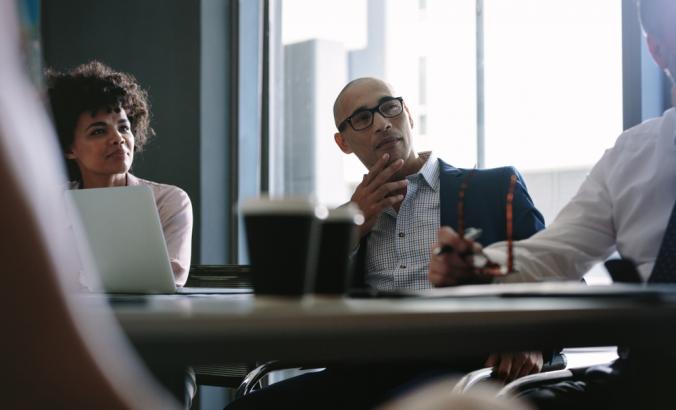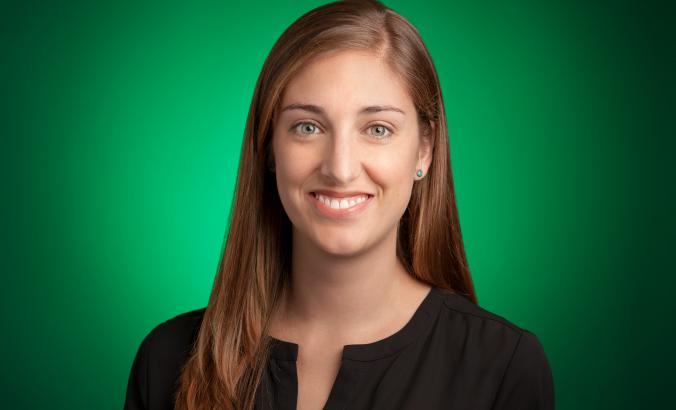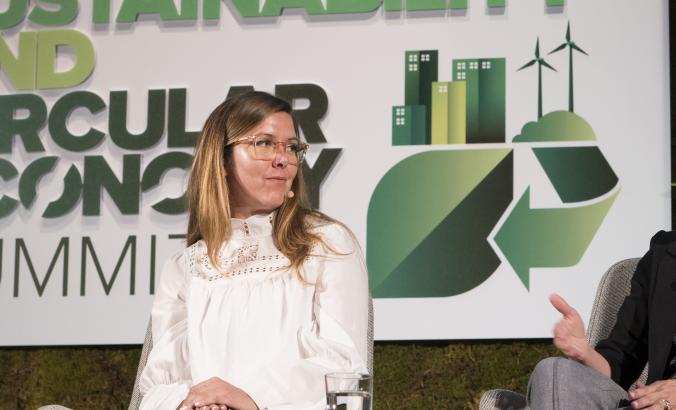Alli O’Connell has had a jam-packed 12 months.
In August 2020, after years spent working in international development and the nonprofit sector, she took the leap into a role at California tech company Autodesk’s charitable foundation. Only a few months into the role, her supervisor left, turning what should have been a six-month contract position into not just a permanent role, but a big promotion for O’Connell too.
Now head of marketing and communications at the organization, she talks about what lay behind the risky decision to quit Fairtrade America for the job at Autodesk Foundation, the biggest challenges she’s faced during the transition and the emerging synergy between impact expertise and the corporate sector.

Shannon Houde: When we met, you were prepping for the interview with Autodesk. Tell us a little bit about your transition from a nonprofit at Fairtrade America to a tech company. How did you feel you were able to make that change?
Alli O’Connell:More and more corporations are realizing that they need to have impact embedded into their work, whether that's through traditional ESG reporting requirements or a more comprehensive focus on impact overall. Because of this, there’s a synergy between more corporate, Silicon Valley or tech companies, and people who have skills and on the ground experience in the impact space. That experience allows you to effectively dialogue and build impact strategies with other stakeholders within the company who may not have the background or expertise. At the Autodesk Foundation, we’re very grantee-forward, so having been on the other side of the table as the grantee, someone with experience in impact sector brings a valuable understanding and level of empathy to working with grantees.
At Autodesk, for example, we’ve recently launched a corporate impact strategy, and the Autodesk Foundation has a big role in that. The Autodesk Foundation’s work and strategy is extremely informed by the nonprofits that we work with. They’re the key players that help inform areas such as impact wide metrics for the corporation, and the way we're looking at how do we do impact measurement and management.
Houde: As you say there’s great synergy there. But one of the things people still worry about in changing sectors is demonstrating they have the right experience. How did you make the connection between your different roles when applying to Autodesk to demonstrate that experience?
O’Connell:For me, I think it was really reflecting on the fact that I'm a quick learner, I've adapted to a lot of different environments, I've worked overseas in multiple jobs, I've worked in nonprofits, in government, and I've worked with corporate clients, though I had never on the corporate side.
I also went through a reflection process and considered, what is my unique value? But I have found there wasn’t resistance, there was actually a lot of common ground. Many people in our team on the foundation side have nonprofit experience, too, because that's what is called for in the work we do.
Houde: And when you hear the word "foundation," you tend to think kind of a nonprofit. But when it's got a corporate name like Autodesk in front of it, how does it differ?
O’Connell:I think it looks different at every corporate foundation. For us, we are our own unique entity, a registered private foundation that is funded by Autodesk. Autodesk invests 1 percent of its operating revenues into the Autodesk Foundation. We support design and engineering solutions to the most pressing social and environmental challenges. We currently have a portfolio of about 40 nonprofits and startups who we support with either grants or impact investments.
We use the expertise that is available through our corporate funder Autodesk, whether that’s through connecting networks, talent or technology to amplify and scale the work of the portfolio we invest in. We’re connecting engineers, designers, marketers, everyone who is an Autodesk employee, to helping solve these social and environmental challenges that the nonprofits and startups that we fund are working on.
有很多引人入胜的故事。我想告诉他们所有人,但是你不能。因此,我必须通过与策略保持一致来确定优先级。
For example, we are funding a startup called Gradient. They’re designing an energy-efficient air conditioning and heating unit that’s really sleek and very design-forward. And yes, we can provide them funding. But in addition to that, they can work with pro bono consultants on certain iterations of their product or they can get support on manufacturing from Autodesk. And they also have access to Autodesk technology for free through Autodesk’s Technology Impact Program.
Houde: What was the biggest concern of going into a corporate space for you? What did you find the most difficult?
O’Connell:In my marketing and communications role, I'm working both directly with our nonprofit partners but also with Autodesk’s corporate marketers. At the foundation, everybody has a mindset that is very grantee-forward and impact-forward. But applying that same mindset into the corporate side — where not everybody is so familiar with the nonprofit side — means you’re always trying to adapt and understand the audience and who you're working with. With some co-workers that means there's a little bit more context shared around how we collaborate effectively with grantees on storytelling. One way that the foundation has adapted to that is we refer to our foundation grantees as customers internally, which signals value at a customer-forward company.
Houde: And now in your role, what would you say are the main challenges that you face day to day on a regular basis in your job?
O’Connell:I'd say, everything comes back to this: prioritization. We have so many fantastic stories to tell across the 40 organizations in our portfolio, plus the 2,000-plus organizations that are using Autodesk software, plus the 10,000-plus employees who are driving impact in their work through different volunteering and pro-bono consulting.
有很多引人入胜的故事。我想告诉他们所有人,但是你不能。因此,我必须通过与策略保持一致来确定优先级。目前,我们正在确定故事中的差距,无论是划分的区域,地理位置等,以塑造明年我们想要浮出水面的东西。
Houde: Shortly after you started the role, your supervisor left. How did you transition that from what could’ve been a disadvantage to an advantage?
O’Connell:The transition happened after I had been in my role for five months. At that point, the team already had a sense of the quality of my work and what I was delivering on. I also had a really encouraging leadership team that was clear that they supported me in this and wanted to see me thrive. One of my bosses frequently asked, "What can I do to help you?" It’s an incredibly supportive environment. So when this window of opportunity came up, I became curious about it but also felt grounded in the support from the team.
One thing that was helpful to me in this phase of transition was, thinking through, OK, I’m in this moment of change and growth, how can I discern what I really want? What do I want to take responsibility for to make that outcome happen? And now, a year later I'm onboarding my first hire this week, someone to essentially backfill the role that I was hired to do.
Shannon Houde is an ICF-certified career and leadership coach who foundedWalk of Life Coachingin 2009. Her life’s purpose is to enable change leaders to turn their passion into action and to live into their potential — creating scalable social and environmental impact globally. To follow more stories like these, join Shannon forCoffee & Connect,where she interviews sustainability practitioners every month to learn more about their day-to-day responsibilities.





